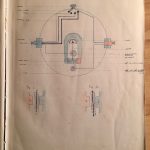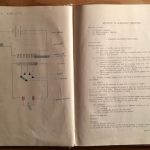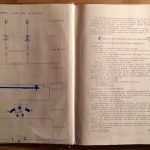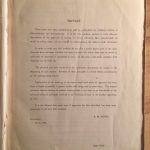Most physiotherapists will have memories of learning about electrotherapy. Perhaps you learned from Clayton’s Electrotherapy and Actinotherapyabout sinusoidal currents and short-wave diathermy. And perhaps you still have waking nightmares about induction coils? Or perhaps, if you trained under Enid Gotts at the School of Physiotherapy in Dunedin, New Zealand, you’ll be woken at night by images of rectifying circuits and thermionic valve apparatuses? Because students who went through their training under Gotts not only learned how to apply various Galvanic batteries and carbon arc lamps, they also learned to wire them.
Gotts, later Enid Anderson, was Principal at the school from 1946 until 1965, and, as well as being an experienced physiotherapist, was also a trained electrician. Gott, ‘a tall Englishwoman of imposing stature’ (Shaw 2013, 77), was a stern authoritarian but an excellent teacher and her commitment to her subject was unmatched.
Gott believed that students needed to be able to understand the workings of the machines they would be using in practice and, perhaps anticipating post-war shortages and New Zealand’s remote location, how they might repair them if they broke down.
But conscious that the curriculum was already full, and that she wanted to emphasize thinking rather than note-taking, Gotts published her own book on the Apparatus Used in Electrotherapy and Actinotherapy from 1950 onwards. The book included technical descriptions of the machinery, but also left space on each opposing page for students to draw in their own circuits and wiring diagrams.
The book is quite a remarkable example of Gotts’s attention to detail and to modern teaching practices and must have been an invaluable resource to the students who experienced her course.
Reference
Shaw, L. (2013). In our hands: 100 years of the School of Physiotherapy in Otago 1913-2013. Dunedin: University of Otago.







